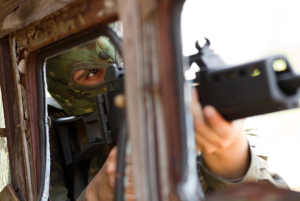A Drug is a Drug is a Drug
“The modern understanding of what drugs do in psychiatry, the basis of psychopharmacology, is fatally flawed.” (Joanna Moncrieff)
In The Myth of the Chemical Cure, British psychiatrist Joanna Moncrieff persuasively argued that believing modern drug treatments are specific cures for specific illnesses “is just as mistaken as the belief that insulin coma treatment was an effective and specific treatment for schizophrenia.” This misperception has resulted in “the misdirection of research, the misinterpretation of available evidence and the obstruction of a fuller and more accurate understanding of what psychiatric drugs do.”
Essentially all of the drugs currently used in psychiatry have been developed since the 1950s. While drugs were widely used before that time, they were seen as having crude effects, “usually acting as chemical forms of restraint.” Since that time, drug treatment has been seen as making psychiatry “truly scientific.” Part of this transformation was a radical change in theories of what drugs actually do. “Instead of being seen as substances that induced effects that were crude but useful, they came to be seen as specific treatments for specific illnesses. They became ‘cures.’”
As a consequence, Moncrieff called the current view of psychotropic drug action the “disease-centered model.” It exists in two related forms. One suggests that drugs act on the underlying causes of a disease or condition. The other suggests that drugs act on the specific pathology responsible for producing the psychiatric symptoms.
This disease-centered model is assumed and rarely articulated. But its existence can be inferred from the way that psychiatric drugs are described and investigated. The names of drug classes themselves reflect this disease centered-model: antipsychotics; antidepressants; anti-anxiety medications. It begs the question of exactly what the biological state is that these drugs are supposed to correct. “The predominant psychiatric theory about this is colloquially referred to as the ‘chemical imbalance’ theory of psychiatric disorder.”
Moncrieff proposed an alternative model, that she called the “drug-centered model.” It suggests that the therapeutic value of a drug is derived from the particular quality of the abnormal brain state it produces. “Psychiatric drugs are psychoactive drugs which, by their neurophysiological effects alter ‘mental and emotional life and behaviour for the duration of the treatment.’” Here is a reproduction of a table Moncrieff used in The Myth of the Chemical Cure to show the differences between the two models:
| Disease-centered model |
Drug-centered model |
|
Drugs help correct an abnormal brain state |
Drugs create an abnormal brain state |
|
Therapeutic effects of drugs derive from their effects on presumed disease pathology |
Therapeutic effect derive from the impact of the drugs-induced state on behavioral and emotional problems |
|
Drug effects may differ between patients and volunteers |
Effects do not differ |
|
Outcomes of drug research consist of effects of drugs on measures of the ‘disease’ and its manifestations or symptoms |
Outcomes are the global state produced by drug ingestion and how this interacts with behaviors and experiences |
|
Paradigm: insulin for diabetes |
Paradigm: alcohol for social phobia/social anxiety |
Along with their immediate effects, when psychiatric drugs are taken over a long period of time on a regular and frequent basis, they “induce physical adaptations to the presence of the drug.” These adaptations can be understood as the body’s defense against the effects of a foreign substance and have several consequences. First, they counteract the immediate effects of the drugs, so that larger doses are needed to achieve the same effects. In other words, tolerance to the drug occurs. A second adaptation occurs:
When the drug is stopped or reduced, especially if this is done suddenly, the bodily adaptations are suddenly unopposed by the presence of the drug. It is these unopposed adaptations that cause withdrawal symptoms and they may cause other problems such as precipitating an episode of psychiatric disorder.
If this is interpreted through the disease-centered model, the bodily reaction is interpreted as evidence of the supposed reactivation of an underlying psychiatric condition, rather than a withdrawal syndrome resulting from the decreased presence of the drug in the individual’s body. In opposition to this understanding, the drug-centered model of drug action suggests the effects of drugs used in psychiatry work essentially the same way that recreational drugs do.
In the case of recreational use of drugs, it is effects such as euphoria, stimulation, indifference, disinhibition, psychedelic experiences and some types of sedation that are sought after. These effects are valued as pleasant in themselves, and also as ways of blocking out and anasesthetising people against painful memories and current difficulties. Drugs used in psychiatry have a similar range of effects, and several psychiatric drugs are also drugs of misuse.
I have to confess that while I’ve spent my professional counseling career working with individuals struggling with drugs of abuse, the disease-centered model of drug action encompassed my worldview of the so-called mental disorders for too long. This was despite knowing on some level that what Joanna Moncrieff said was true.
There is a saying in Narcotics Anonymous (N.A.) that applies to the drug-centered model for psychiatric medications introduced here: “A drug is a drug is a drug.” We have lived too long with the disease-centered model of psychotropic drug action. A drug is a drug, regardless of whether it is alcohol, cocaine, Prozac or Seroquel. Psychotropic drugs do not correct abnormal brain states; they create them. You can watch YouTube videos of Joanna Moncrieff here (The Myth of the Chemical Cure: The Politics of Psychiatric Treatment) and here (De-mystifying psychiatric drugs). You can also go to her website for more information. She’s even made some of her published papers available.


